Vegetables: Vocabulary about it
Where do you come from? Where are you going? Have you ever thought about traveling? Imagine that in every single place on the planet there is a whole range of textures, flavors and smells. From the ground, living beings are always growing, we can eat them, and they can fill us with their spirits: the nutrients and the strength we need to stay alive.
What are some of the vegetables found in your country? Which ones in Spanish-speaking countries? Have you ever wondered how the seasons affect the crops, creating cycles of life and death? Did you know that the countries that are on the equator line like Colombia and obviously Ecuador always keep a constant temperature?
First, let’s look at some of the vegetables typical of (Latin)American lands, like:
El Ají = Chili
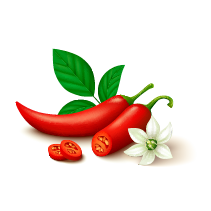
El Cacao = Cocoa
The hot chocolate that you prepare every morning comes from cocoa, but what you may not have known is that originally the beverage consumed from cocoa was totally different, a bitter and spicy drink, rarely sweet, made for special occasions and ceremonies.

Arugula = Rúcula
Arugula is a leafy green vegetable that has a slightly peppery flavor. It is often used in salads or as a garnish on other dishes. Arugula is a good source of vitamins A and C, as well as iron and calcium.
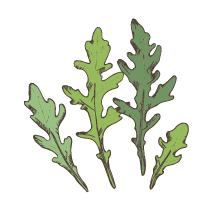
Beet Greens = Remolacha
Beet greens are the leaves of the beet plant. They have a slightly sweet flavor and are often used in salads or sautéed as a side dish. Beet greens are a good source of vitamins A, C, and K, as well as iron and calcium.
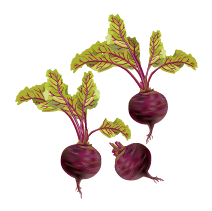
El Maíz = Corn
What kind of meals come from corn? For example, typical and popular meals in countries like Colombia and Venezuela, such as the “arepa” (a crunchy and delicious cookie that has been consumed mainly for breakfast since indigenous times) or the “empanada” (a type of fried turnover consisting of pastry and filling) come from corn.
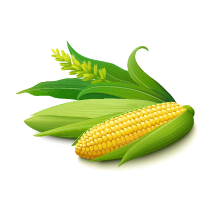
La Papa = Potato

El Tomate = Tomato
There is a curious fact about tomatoes that you may already know: tomatoes are not a vegetable. Yes, as you read it, tomatoes are fruits.
Anything with seeds -like tomatoes-is a fruit, try to contradict this logic and I bet you a lunch made by my abuelita that you won’t be able to beat me. The same thing is going to happen with all the other “vegetables” on this list 😉.
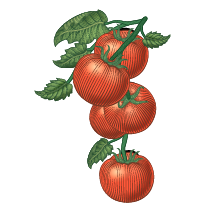
Other plants, cereal and fruits that were brought from Europe after the colonial times were:
Broccoli = Brócoli
Broccoli is a cruciferous vegetable that is often eaten cooked or raw. It has a slightly bitter taste and is a good source of vitamins C and K, as well as fiber and manganese.
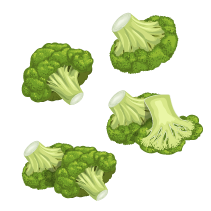
Brussels Sprouts = Coles de Bruselas
Brussels sprouts are small, round vegetables that have a slightly bitter flavor. They are often cooked or roasted and can be a good side dish or addition to salads. Brussels sprouts are a good source of vitamins C and K, as well as fiber and manganese.
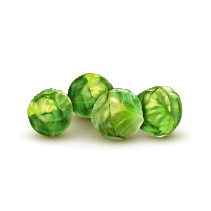
Carrots = Zanahorias
Cabbage is a leafy green vegetable that can be eaten raw or cooked. It has a mild flavor and is often used in salads or slaws. Cabbage is a good source of vitamins C and K, as well as fiber and manganese.
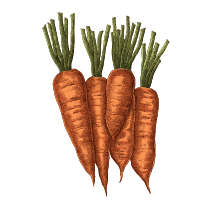
As you may know, some names for vegetables in Spanish are different across various Spanish-speaking countries. That’s why we want to extend this list of vegetables with the different names in Spanish they have around the world. Here, you’ll find most of them. If we missed a name, let us know in the live chat and we’ll update the list!
Check Out Our
Spanish Training for Restaurants
| Vegetable Name - English | Vegetable Name - Spanish | Most Commonly Used in: |
|---|---|---|
| Tomato | Tomate | Everywhere |
| Tomato | Jitomate | Mexico |
| Onion | Cebolla | Everywhere |
| Onion | Puerro | Spain |
| Spinach | Espinaca | Everywhere |
| Pepper | Pimiento | México, Guatemala, Perú |
| Pepper | Pimentón | Bolivia, Colombia, Chile, España, República Dominicana, Venezuela, Ecuador |
| Pepper | Ají Pimiento | Panamá |
| Pepper | Chiltoma | Nicaragua |
| Pepper | Locote | Paraguay |
| Pepper | Chile dulce | Costa Rica |
| Pepper | Morrón | México, Uruguay, Argentina, España |
| Eggplant | Berenjena | Everywhere |
| Artichoke | Alcachofa | Almost everywhere |
| Artichoke | Alcaucil | Argentina |
| Radish | Rábano | Everywhere |
| Cucumber | Pepino | Everywhere |
| Celery | Apio | Colombia, Venezuela, Perú |
| Celery | Otoe, Arracacha | Panamá |
| Celery | Arracacha | Chile, Argentina |
| Celery | Zanahoria blanca | Ecuador |
| Celery | Arracache | Costa Rica |
| Garlic | Ajo | Everywhere |
| Corn | Maíz | Everywhere |
| Corn | Chócolo | Chile, Colombia, Perú |
| Corn | Elote | México |
| Corn | Mazorca | Colombia |
| Corn | Choclo | Uruguay |
| Corn | Sara sara | Perú |
| Corn | Jojoto | Venezuela |
| Corn | Danza, millo, mijo, oroña, panizo, borona, panocha | Spain |
| Corn | Millo | Islas Canarias |
| Corn | Mote | Colombia, Ecuador, Perú, Bolivia, Chile y Argentina |
| Corn | Avati | Paraguay |
| Carrot | Zanahoria | Everywhere |
| Pumpkin | Calabaza | Everywhere |
| Pumpkin | Ahuyama | Colombia, Venezuela, República Dominicana |
| Pumpkin | Zapallo | Argentina, Chile, Uruguay, Paraguay, Bolivia, Perú, Ecuador, sur de Colombia, Panamá |
| Pumpkin | Pipián | México |
| Pumpkin | Ayote | Guatemala, Costa Rica, El Salvador, Nicaragua |
| Broccoli | Brócoli | Everywhere |
| Capers | Alcaparras | Everywhere |
| Cabbage | Repollo, col, berza | Everywhere |
| Avocado | Aguacate | España, México, Venezuela, Colombia, Guatemala, Panamá |
| Avocado | Palta | Chile, Argentina, Uruguay, Perú |
| Bean | Frijol | Everywhere |
| Bean | Frisol | México, Guatemala, El Salvador, Panamá, Nicaragua, Costa Rica, Cuba |
| Bean | Fréjol | Perú, Ecuador |
| Bean | Poroto | Chile, Uruguay, Panamá |
| Bean | Frijolito | Panamá |
| Bean | Chimbaro | Honduras |
| Bean | Chojol | El Salvador |
| Bean | Caraotas negras, Caraotas rojas, Caraotas Blancas, Frijol Chino, Frijol | Venezuela |
| Bean | Alubias, Judías | España |
| Lentils | Lentejas | Venezuela, Panamá |
| Lentils | Frijoles | Uruguay, México |
| Potato | Papa | Everywhere |
| Sweet Potato | Patata, batata, boniato | Spain |
| Sweet Potato | Camote / Camote morado | México, Perú, Ecuador |
| Sweet Potato | Batata | Argentina, Venezuela |
| Sweet Potato | Papa dulce | Colombia |
| Beetroot | Remolacha | España, Argentina, Panamá, Venezuela, Colombia, Uruguay, Ecuador |
| Beetroot | Betabel | México |
| Beetroot | Betarraga | Chile, Perú |
| Beetroot | Beterraba | Argentina, Ecuador, Bolivia |
| Squash | Calabacín | España, Venezuela, Colombia |
| Squash | Calabacino | España |
| Squash | Guicoy | Guatemala |
| Squash | Zapallo Italiano | Chile |
| Squash | Calabacita | México |
| Squash | Guicoy | Guatemala |
| Squash | Zuccini | Ecuador |
| Squash | Zapallito | Perú, Argentina |
| Squash | Zuquini | Uruguay |
| Peas | Guisante | Venezuela, España |
| Peas | Chicharos | México |
| Peas | Arvejas | Argentina, Chile, Colombia, Ecuador |
| Peas | Arvejas o Alverjas | Perú |
| Ginger | Jengibre | España, México, Argentina, Venezuela, Colombia, Ecuador |
| Ginger | Kión | Perú |
| Olive | Aceituna, Oliva | Everywhere |
| Plantain | Plátano | España, Panamá, Perú, Venezuela |
| Plantain | Banana | Argentina, Chile, Uruguay |
| Plantain | Banano | Colombia, Guatemala |
| Plantain | Guineo | Ecuador |
| Plantain | Guineo o plátano | México |
| Peas/Beans | Judias Verdes | España |
| Peas/Beans | Ejotes | México |
| Peas/Beans | Vainicas | Costa Rica |
| Peas/Beans | Chauchas | Argentina, Uruguay, Paraguay |
| Peas/Beans | Frijolitos | Nicaragua |
| Peas/Beans | Porotos Verdes | Chile |
| Peas/Beans | Vainitas | Perú, Venezuela, Ecuador, República Dominicana, Bolivia |
| Peas/Beans | Habichuelas | Colombia, España, Cuba, Panamá, Honduras, |
| Peas/Beans | Habichuelas tiernas | Puerto Rico |
| Lettuce | Lechuga | Everywhere |
| Yam | Ñame blanco | Nicaragua, Guatemala, República Dominicana |
| Yam | Ñame | Costa Rica, El Salvador, Panamá, Panamá, Honduras, Venezuela, Colombia |
| Coriander | Cilantro | Venezuela, Chile, Uruguay, Panamá, Ecuador, México, Paraguay, Colombia |
| Coriander | Culantro Castilla | Perú, Ecuador, Honduras, Guatemala |
| Coriander | Culantro o Cilantro | Costa Rica, Guatemala |
| Garlic | Ajo | Uruguay, Argentina, Cuba, Venezuela, Chile, Nicaragua, México |
| Garlic | Ajillo | Costa Rica, El Salvador, Guatemala, Panamá, |
| Cassava | Yuca | Cuba, Puerto Rico, Venezuela, México, Argentina, Colombia, Uruguay |
| Cassava | Mandioca | Argentina, Paraguay |
| broccoli | Brocoli | Everywhere |
| Chili | Ají | Bolivia, Chile, Colombia, Venezuela, Ecuador, Paraguay, Uruguay, Argentina |
| Chili | Chile | México |
| Chili | Chili | Guatemala, El Salvador, Nicaragua, Honduras, |
| Chili | Chambo | Panamá |
| Chives | Cebolleta, Cebolla de Verdeo | Uruguay, Argentina |
| Chives | Cebollina | Panamá, Costa Rica, Honduras |
| Chives | Cebollita China | Perú |
| Chives | Cebolla Larga, Cebolla blanca, Junca | Ecuador, Colombia |
| Chives | Cebollín | El Salvador, Venezuela, Bolivia, Chile, Colombia, México |
| Chives | Cebollita de Verdeo | Paraguay |
Vegetables – Quiz/Worksheet
Now that we have already seen some vegetables, let’s play a game. You will read a description of a vegetable in Spanish and you will guess which is the vegetable we are talking about.
1. Es comunmente conocido por su color amarillo, aunque en el pasado podía encontrarse de múltiples tonalidades. Se usa para hacer comidas como la “arepa” y la “empanada”. Es el _________.
2. Es rojo y circular. Es originario de América y se usa en la famosa pizza napolitana. Podrías cultivarlo en el jardín de tu casa. Es el __________.
3. Este es un vegetal que podría hacer tu boca arder. Hay algunos tipos que incluso podrían inflamarte la piel con sólo tocarlos. Es el ingrediente por excelencia en países como México. Es el ________.
4. Estos son pequeños granos, usualmente rojos, que crecen dentro de una verde y alargada coraza. Son una buena fuente de proteína y hacen parte de un plato típico, llamado “Bandeja Paisa”. Son los __________.
5. En realidad es una fruta, que crece de una planta verde y mediana. Sus granos se usan para la preparación de una bebida caliente que la gente en muchos lugares del mundo bebe temprano en la mañana para sentirse despiertos y llenos de energía antes de empezar a trabajar. Es el __________.
6. Esta es la protagonista de Halloween, los niños y adultos juegan a hacer caras y poner velas entra de ella para adornar las casas. La ______ sirve tanto para preparaciones dulces como saladas.
7. Definitivamente, si haces una estadística saldrá como ganadora su presentación frita, como acompañante natural y clásico de las hamburguesas, las _______ son un tubérculo que tiene muchísimas formas de ser comidas.
8. Los _____ pueden llegar a ser confundidos con las bananas si no preguntas antes de comprarlos, hasta Tarzán podrá hablarte sobre esto.
9. El _____ está asociado directamente con la comida oriental, además es una parte de lo que envuelve el sushi. En Latinoamérica este grano blanco es uno de los acompañantes en los platillos fuertes como almuerzos y cenas.
10. De aquí nace uno de los postres favoritos de muchos, el chocolate. El _____ es la semilla de donde nace este dulce acompañante, los países Venezuela y Suiza se disputan el puesto número uno sobre quién tiene el mejor y más sabroso.
The answers
Let’s see what the answers are! Don’t worry if you had a hard time or if you got some of them wrong, and even less if it’s your first time, try to practice daily!
1. Maíz
2. Tomate
3. Ají
4. Frijoles
5. Café
6. Calabaza
7. Papas
8. Plátanos
9. Arroz
10. Cacao
Fun Facts
Did you know that corn was one of the first vegetables that were grown on the planet? And that there are at least 220 different types of it (with different colors)? And that there are several types of drinks made from it (like Chicha in Colombia and Pozol in Mexico)?
There are some expressions in Spanish that use the names of vegetables to say that something is not important to us, so: “Me importa un rábano / pepino / pimiento” = I don’t care.
Also, when we want to talk about our soulmate, we call it, literally, our “half orange”, for example, in a sentence like: “Eres mi media naranja” = You’re my soulmate.
In Colombia, the term “zanahoria” (carrot), is used to describe a person that doesn’t like to have fun or to party, someone that never drinks or wants to hang out, someone who is always early at home and is considered naive and boring. For example: “Eres muy zanahoria, nunca te quedas con nosotros hasta tarde” = You’re so boring/naive, you never stay with us until late.
Although Mexicans are often known for calling all kinds of grains “frijol” (beans), and also for being very good at making them for their typical dishes, one of the few grains that is saved from being called “frijol” is rice. By the way, if you want to practice your Mexican accent more, the way the word “frijol” is pronounced is by putting the vowel force on the letter “i”.
About the Author:

Specializations: Spanish Tutors on Zoom
Bio: I’m Sandra Marulanda, I was born in Colombia, and I’m currently living in Medellín. I'm an anthropologist, passionate about literature, arts, dance and music. Not only that, but I finished my master's degree and got a result of 7 on the IELTS Test for English proficiency. With me, you’ll get not only the mastery of Spanish (in speaking, writing, listening, and reading) but you’ll have much more than a common grammar-based language lesson, you'll also have an experience founded on "content-based learning" in which we’ll analyze and reflect about social and cultural issues.
View my Profile to Book a Private Spanish Lesson
Other articles: Spanish Verb Haber Conjugation and Uses



